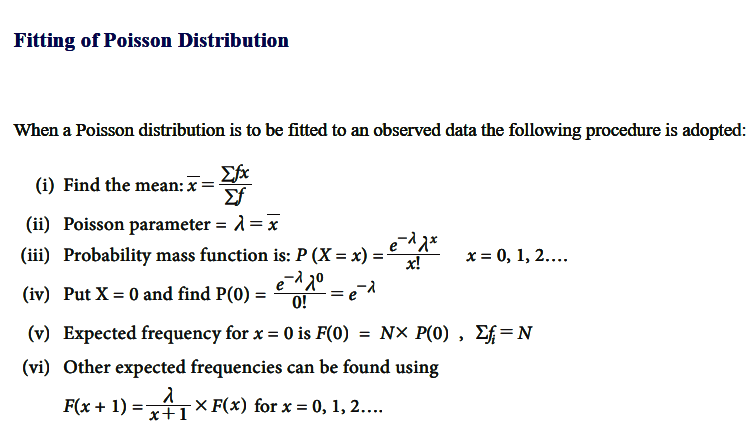The Poisson distribution is another discrete probability distribution which has frequent applications faunal sampling operations where the character or variate under study is the number of animals or species per unit of observation. In practice, if the count data represent the number of rare events occurring within a given unit of time or space (or some volume of matter), the distribution of these counts can be described by the Poisson distribution. If ‘p’ the probability of occurrence an event is very small and ‘n’ the number of trails is very large such that np is constant, then Binomial distribution tends to follow Poisson distribution.
In probability theory and statistics, the Poisson distribution, named after French mathematician Siméon Denis Poisson, is a discrete probability distribution that expresses the probability of a given number of events occurring in a fixed interval of time or space if these events occur with a known constant mean rate and independently of the time since the last event. The Poisson distribution can also be used for the number of events in other specified intervals such as distance, area or volume.
For instance, a call center receives an average of 180 calls per hour, 24 hours a day. The calls are independent; receiving one does not change the probability of when the next one will arrive. The number of calls received during any minute has a Poisson probability distribution: the most likely numbers are 2 and 3 but 1 and 4 are also likely and there is a small probability of it being as low as zero and a very small probability it could be 10. Another example is the number of decay events that occur from a radioactive source in a given observation period.
Poisson distributions are used by businessmen to make forecasts about the number of customers or sales on certain days or seasons of the year. In business, overstocking will sometimes mean losses if the goods are not sold. Likewise, having too few stocks would still mean a lost business opportunity because you were not able to maximize your sales due to a shortage of stock. By using this tool, businessmen are able to estimate the time when demand is unusually higher, so they can purchase more stock. Hotels and restaurants could prepare for an influx of customers, they could hire extra temporary workers in advance, purchase more supplies, or make contingency plans just in case they cannot accommodate their guests coming to the area.
With the Poisson distribution, companies can adjust supply to demand in order to keep their business earning good profit. In addition, waste of resources is prevented.
A Poisson distribution can be used to analyze the probability of various events regarding how many customers go through the drive-through. It can allow one to calculate the probability of a lull in activity (when there are 0 customers coming to the drive-through) as well as the probability of a flurry of activity (when there are 5 or more customers coming to the drive-through). This information can, in turn, help a manager plan for these events with staffing and scheduling.
Fitting of Poisson Distribution
When a Poisson distribution is to be fitted to an observed data the following procedure is adopted:
